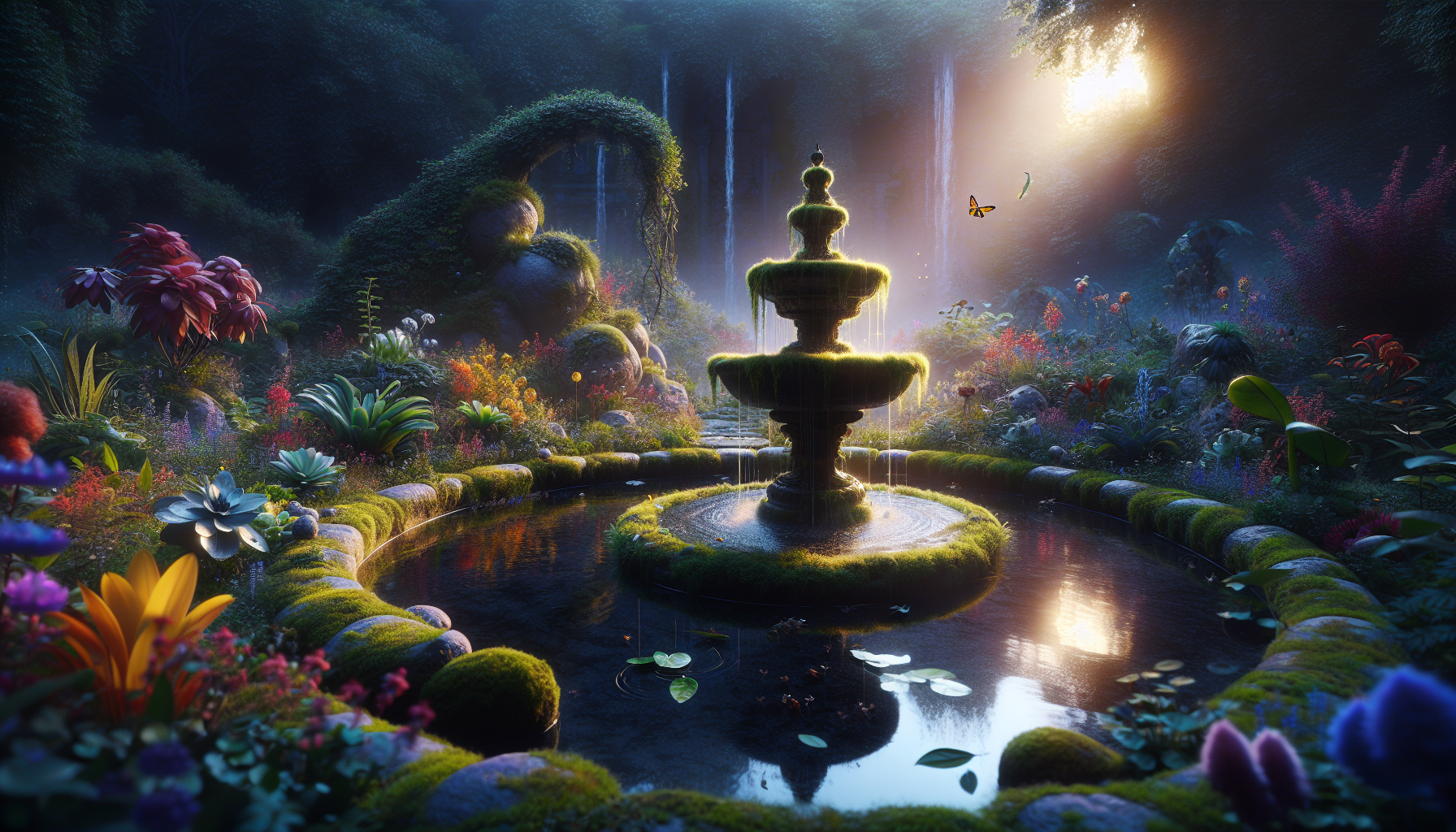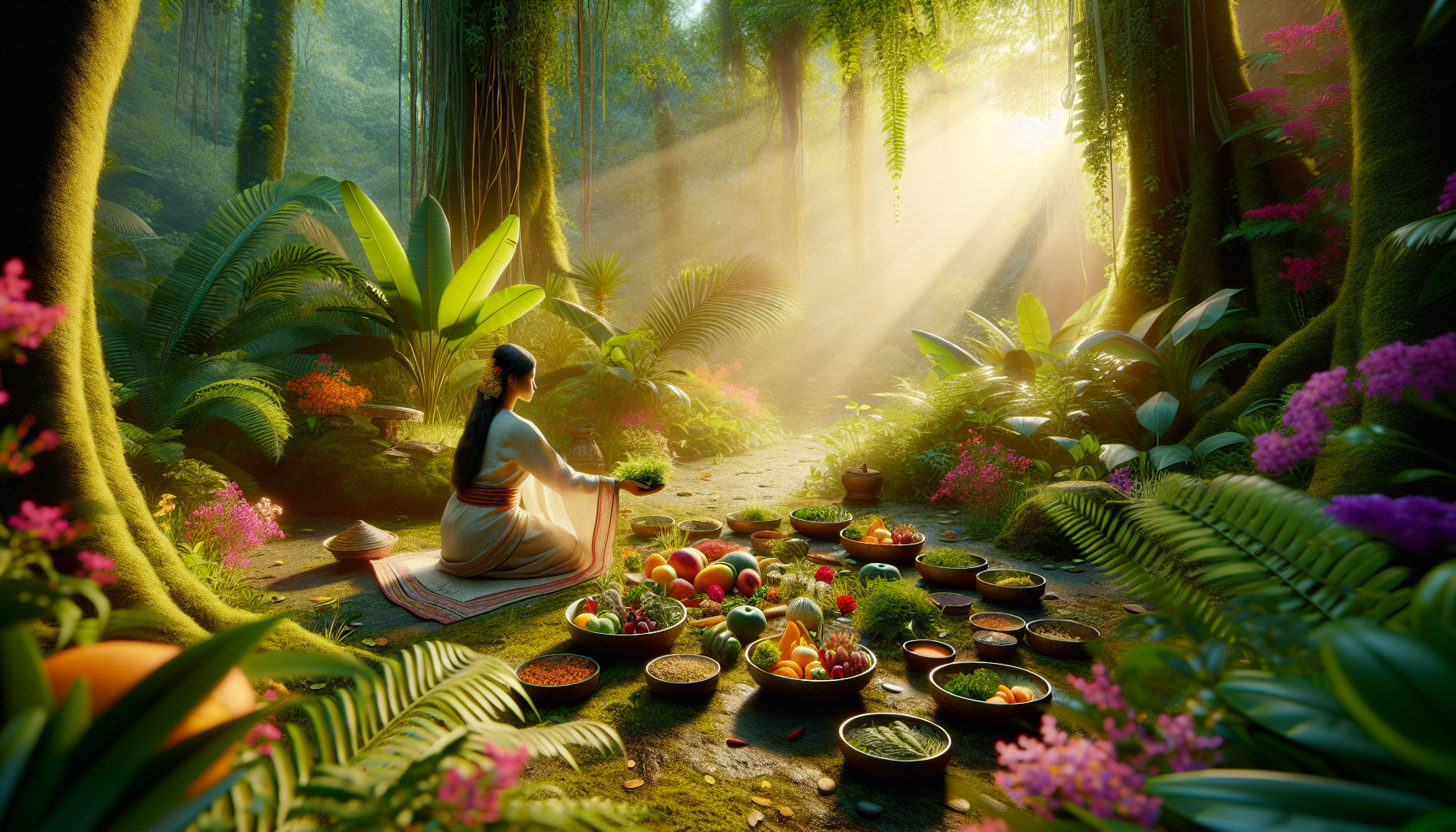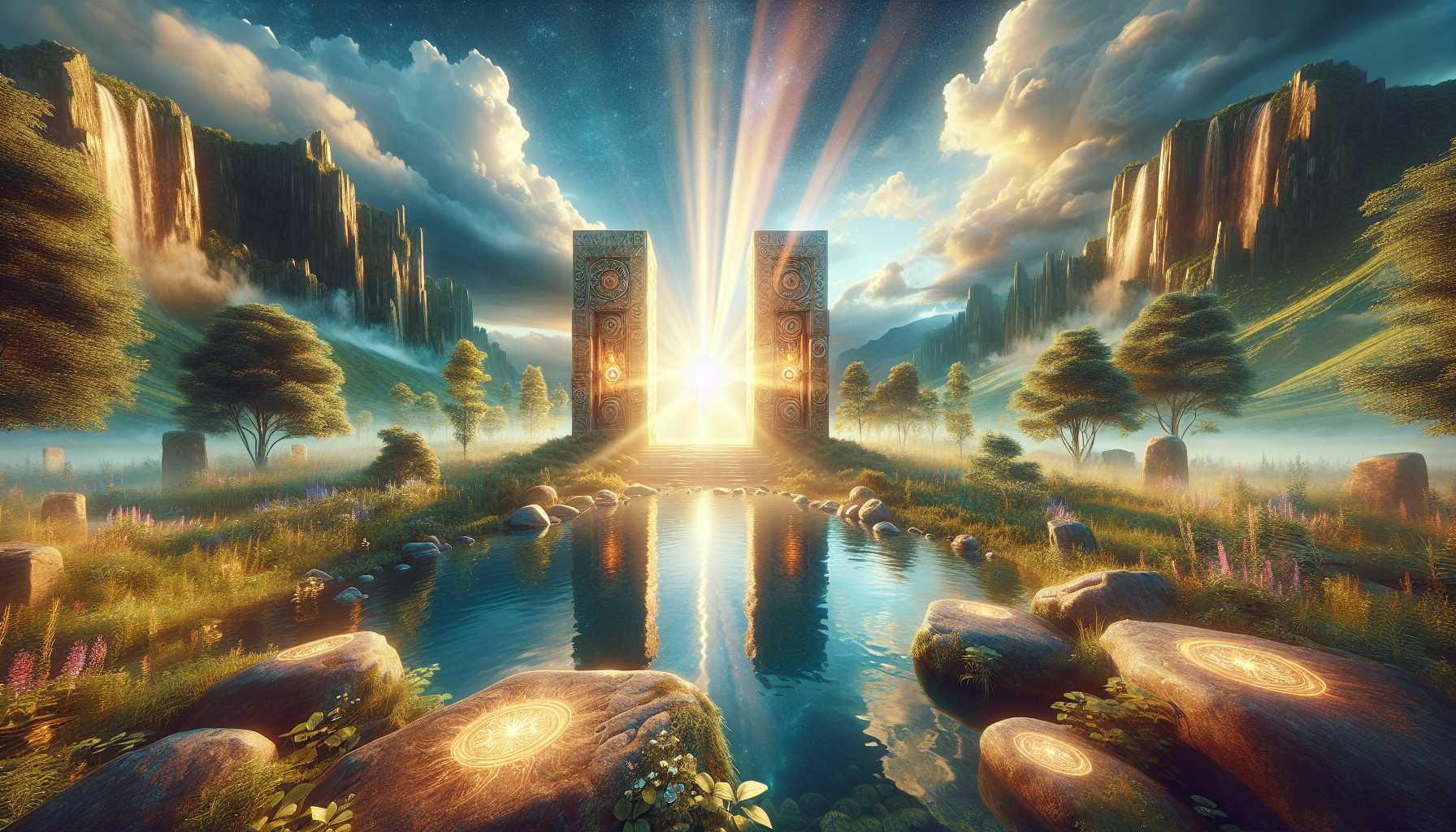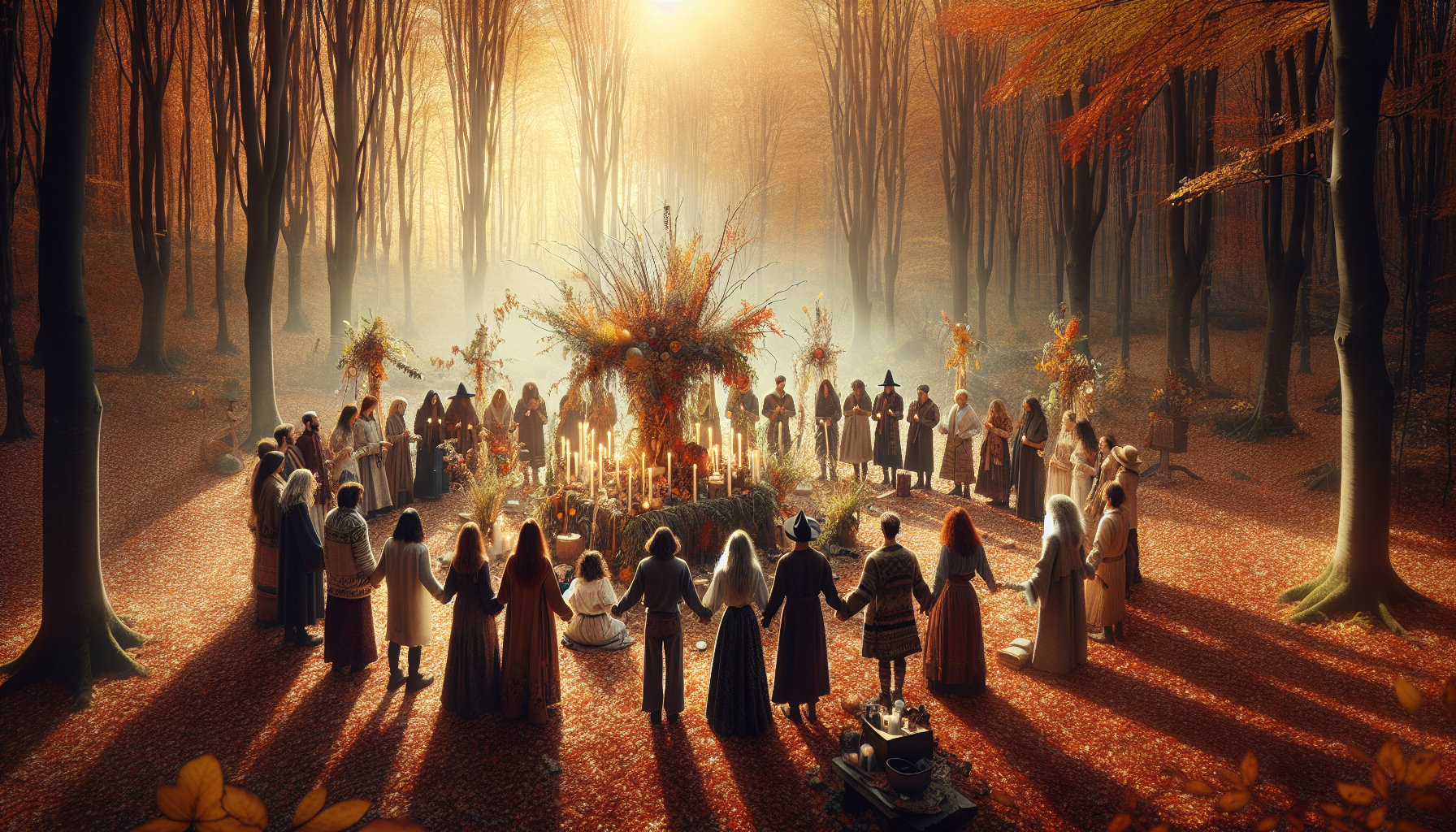In a world increasingly driven by data and digital interactions, the art of storytelling remains a beacon of human connection, a timeless thread weaving through cultures and generations. Imagine a place where each element is a narrative, where every corner whispers a tale, and every design choice is a word in a larger story. Welcome to “The Enchanted Garden: Unleashing the Power of Storytelling Through Design.” This is not just about aesthetics or functionality; it’s about creating spaces that resonate on an emotional level, spaces that speak to the heart and soul. It’s about transforming environments into living narratives that captivate, inspire, and connect.
Storytelling in design is not merely an embellishment; it’s a powerful tool that shapes our experiences and perceptions. When we step into a well-designed space, we aren’t just entering a room; we’re embarking on a journey. This journey, guided by carefully curated elements, draws us into a story that unfolds with every step we take. In this enchanted garden, the narrative is not static. It evolves, breathing life into the environment and inviting us to become a part of its tale. This seamless integration of narrative and design challenges us to rethink how spaces can influence emotions and behavior, encouraging us to interact and engage more deeply.
Throughout this exploration, we’ll delve into how designers use storytelling to evoke emotions, convey messages, and create memorable experiences. We will examine the techniques and principles that transform ordinary spaces into extraordinary stories. From the use of color and texture to the strategic placement of objects, each design decision contributes to a cohesive narrative that speaks to the visitor. We will also highlight real-world examples of storytelling in design, showcasing how some of the most innovative spaces have been crafted to tell unique and compelling stories.
As we embark on this journey through the enchanted garden, we invite you to open your mind to the possibilities that lie at the intersection of storytelling and design. Together, we will discover how these two powerful forces can create environments that not only meet functional needs but also enrich our lives in profound ways. Whether you are a designer seeking inspiration or a storyteller looking to expand your canvas, this exploration promises to illuminate new paths and spark new ideas. Let’s set forth into this garden of stories and see what wonders await. 🌿✨
The Art of Storytelling in Design
Storytelling has been an intrinsic part of human culture since time immemorial. It is a powerful tool that transcends generations, cultures, and borders. When integrated into design, storytelling becomes even more potent, transforming ordinary spaces into immersive experiences that captivate and engage audiences. The enchanted garden of storytelling in design is a realm where creativity meets functionality, offering a multi-dimensional journey through narrative-driven environments.
Designers leverage storytelling to communicate messages, evoke emotions, and connect with audiences on a deeper level. Unlike straightforward design, storytelling-infused environments invite users to participate in a narrative, creating a personal connection that is both memorable and impactful. The process of incorporating storytelling into design involves a delicate balance of aesthetics, functionality, and narrative structure. It requires designers to think beyond traditional boundaries and embrace a more holistic approach to their craft.
Creating Immersive Environments
Immersive environments are at the heart of storytelling in design. These spaces are designed to engage all the senses, creating a multi-sensory experience that draws the audience into the narrative. By carefully considering elements such as lighting, sound, texture, and color, designers can create a rich tapestry of sensory experiences that enhance the storytelling process. This immersive approach allows audiences to fully engage with the space, fostering a deeper connection to the narrative.
The integration of technology is another important factor in creating immersive environments. Advanced technologies such as virtual reality (VR), augmented reality (AR), and interactive displays provide designers with new tools to enhance storytelling. These technologies enable designers to create dynamic and interactive environments that respond to user input, creating a personalized and engaging experience. For example, AR can be used to overlay digital content onto physical spaces, adding layers of narrative that enhance the storytelling experience.
Interactive storytelling is also gaining popularity in the world of design. By incorporating interactive elements into the design, audiences are invited to participate in the narrative, becoming active contributors to the story. This participatory approach not only enhances engagement but also creates a sense of ownership and personal connection to the space. Interactive storytelling can be achieved through various methods, including digital interfaces, physical objects, and spatial design, allowing for a wide range of creative possibilities.
The Role of Emotion in Storytelling
Emotion plays a pivotal role in storytelling, serving as the bridge between the narrative and the audience. By tapping into the emotional spectrum, designers can create environments that resonate with audiences on a personal level. Emotionally-driven design has the power to inspire, provoke, and transform, leaving a lasting impression that goes beyond aesthetics. This emotional connection is what elevates storytelling in design from mere decoration to a transformative experience.
To evoke emotion through design, it is essential to understand the audience and their emotional triggers. This involves conducting thorough research and analysis to gain insights into the audience’s preferences, motivations, and emotional responses. By understanding the audience’s emotional landscape, designers can tailor their storytelling approach to create a more impactful and meaningful experience.
One effective way to evoke emotion is through the use of symbolism and metaphor. These literary devices can be incorporated into design elements to convey deeper meanings and evoke emotional responses. For example, the use of natural elements such as water, trees, or flowers can symbolize growth, renewal, or tranquility, evoking feelings of peace and harmony. By integrating these symbolic elements into the design, designers can create a rich and layered narrative that resonates with audiences on an emotional level.
Storytelling and Cultural Context
Cultural context plays a significant role in storytelling, shaping the narratives and themes that resonate with audiences. When designing for diverse audiences, it is essential to consider the cultural nuances and values that influence the storytelling process. This involves understanding the cultural symbols, myths, and traditions that hold significance for the audience, and incorporating these elements into the design.
Designers can use cultural storytelling to celebrate diversity and promote inclusivity. By incorporating diverse cultural narratives into the design, audiences are exposed to new perspectives and experiences, fostering a sense of connection and understanding. This inclusive approach not only enhances the storytelling experience but also creates a more welcoming and accessible environment for all.
One of the challenges of incorporating cultural storytelling into design is avoiding cultural appropriation. It is important for designers to approach cultural narratives with sensitivity and respect, ensuring that they accurately represent and honor the culture being portrayed. This involves collaborating with cultural experts and stakeholders to ensure that the storytelling is authentic and respectful.
The Power of Visual Storytelling
Visual storytelling is a fundamental aspect of design, using imagery and visuals to convey narratives and evoke emotions. Through the strategic use of color, composition, and visual elements, designers can create compelling visual narratives that engage and inspire audiences. Visual storytelling is particularly effective in environments where words are limited, allowing the design to speak for itself and convey complex messages through visuals alone.
Color plays a crucial role in visual storytelling, serving as a powerful tool for evoking emotion and setting the tone of the narrative. Different colors can convey different moods and emotions, influencing how audiences perceive and interact with the space. For example, warm colors such as red and orange can evoke feelings of warmth and energy, while cool colors such as blue and green can create a sense of calm and tranquility. By carefully selecting and combining colors, designers can enhance the storytelling experience and create a cohesive visual narrative.
Composition is another important aspect of visual storytelling, influencing how the audience perceives and interacts with the design. The arrangement of visual elements within a space can guide the viewer’s eye, creating a visual journey that enhances the narrative. By strategically placing focal points and creating visual hierarchies, designers can direct the audience’s attention and create a more engaging and dynamic storytelling experience.
Storytelling Through Typography and Graphics
Typography and graphics are powerful tools for storytelling, allowing designers to convey messages and narratives through text and imagery. The choice of typography can greatly influence the tone and mood of the narrative, with different fonts and styles evoking different emotions and associations. For example, a bold, sans-serif font may convey a modern and dynamic narrative, while a serif font may evoke a sense of tradition and elegance. By carefully selecting typography, designers can enhance the storytelling experience and create a more cohesive narrative.
Graphics and illustrations are also effective tools for storytelling, allowing designers to convey complex messages through visual imagery. Illustrations can be used to depict characters, settings, and events, bringing the narrative to life and enhancing the storytelling experience. By incorporating graphics and illustrations into the design, designers can create a rich and immersive visual narrative that captivates and engages audiences.
Interactive graphics and animations add another layer of storytelling, allowing audiences to engage with the narrative in a dynamic and interactive way. By incorporating interactive elements, designers can create a more engaging and participatory storytelling experience, allowing audiences to explore and interact with the design in new and exciting ways.
| Aspect | Traditional Design | Storytelling Design |
|---|---|---|
| Purpose | Focus on aesthetics and functionality | Communicate a narrative and evoke emotions |
| Audience Engagement | Limited interaction | Interactive and participatory |
| Emotional Impact | Minimal emotional connection | Deep emotional resonance |
Check out the table above to understand the differences between traditional and storytelling design approaches.
For further exploration on the subject, watch the insightful video below:
The Power of Storytelling in Design – Video by Design Matters

Conclusion
The exploration of “The Enchanted Garden: Unleashing the Power of Storytelling Through Design” has taken us on a journey through the intricate interplay between narrative and aesthetics, and how they together create transformative experiences. At its core, this theme reveals the profound impact of storytelling as a tool for communication, engagement, and emotional connection within the realm of design.
Throughout the article, we delved into the historical context of storytelling in design, tracing its roots from ancient cave paintings to contemporary digital interfaces. This historical overview highlighted the timeless nature of storytelling and its evolution alongside human civilization. From these origins, we examined the fundamental elements of storytelling—such as character, setting, plot, and emotion—and how designers weave these components into their creations to engage and inspire audiences.
Moreover, the article illuminated the role of technology in amplifying the reach and impact of storytelling in design. With the advent of virtual and augmented reality, designers now have unprecedented tools at their disposal to craft immersive experiences that captivate the senses and transport audiences to new worlds. This technological advancement has not only expanded the boundaries of design but also democratized the storytelling process, allowing a broader range of voices and perspectives to be heard and appreciated.
A significant portion of our discussion focused on the application of storytelling in various design disciplines, from architecture and interior design to graphic and digital design. Through real-world examples, we showcased how storytelling can enhance user experience, foster brand loyalty, and convey complex information in an accessible and memorable manner. The case studies demonstrated that when storytelling is integrated thoughtfully into the design process, it can elevate a project from merely functional to truly enchanting.
The importance of storytelling in design extends beyond aesthetic appeal or commercial success. At its heart, storytelling is a bridge between people, cultures, and ideas. It is a universal language that fosters empathy, understanding, and connection. By embedding stories into design, we not only enrich the user experience but also contribute to a more cohesive and compassionate society.
As we conclude, it is essential to reinforce the transformative power of storytelling in design. Whether you are a seasoned designer, a student, or simply an enthusiast, the principles discussed in this article offer valuable insights into creating designs that resonate on a deeper level. By embracing storytelling, we can break down barriers and inspire change, one design at a time.
We invite you to reflect on the stories you tell through your own work. How can you harness the power of narrative to create meaningful and memorable experiences? Consider the impact your designs have on your audience and how you can use storytelling to enhance this connection.
In the spirit of community and shared learning, we encourage you to engage with this topic further. Share your thoughts and experiences in the comments below, and let’s continue the conversation. Additionally, if you found this exploration of storytelling through design insightful, consider sharing it with others who might benefit from these ideas. Together, we can foster a community of storytellers who are committed to creating a more beautiful and connected world through design. 🌟
Thank you for joining us on this journey into the enchanted garden of storytelling through design. Your voice and creativity are integral to this narrative, and we look forward to seeing how you will unleash the power of storytelling in your own work. Keep creating, keep inspiring, and remember: every design tells a story. What story will you tell today?
For further reading on storytelling and design, you may explore resources such as “The Art of Immersion” by Frank Rose and “Storytelling for User Experience” by Whitney Quesenbery and Kevin Brooks. These works provide additional insights into the principles and applications of storytelling in the design process.
- Explore the potential of storytelling in your own design projects.
- Consider how narrative elements can enhance your audience’s experience.
- Stay informed about new technologies that can facilitate storytelling.
Gabriel is a visual storyteller and symbolic naturalist whose creations explore the veiled ecologies and ancestral ties between humans and the living world, as echoed through myth and memory. With a sensitivity attuned to the sacred, Gabriel unveils the ancient choreography of plant, animal, and spirit — a realm where forests spoke in signs, rivers kept secrets, and every flower bore a forgotten name.
His path winds through the esoteric — tracing the rituals of forest sages, the herbal codes of ancestral healers, and the silent agreements that once guided human life in deep reciprocity with nature. From moss-covered shrines to twilight groves, Gabriel’s work reveals relationships once vital, now buried beneath layers of modern detachment.
With a foundation in visual design and the aesthetics of ancestral wisdom, Gabriel weaves storytelling into sacred ecology. His work doesn’t just depict — it channels. Drawing from myth, mysticism, and lost herbal traditions, he crafts images and narratives that pulse with the old knowing: that nature is not scenery, but kin and teacher.
Through collections of symbolic visuals, myth-rooted studies, and intuitive reflections, Gabriel invites others to rekindle forgotten senses — to listen not only with ears, but with intuition, memory, and reverence.
His work is a tribute to:
-
The mythic language of trees, stones, and roots
-
Forgotten pacts between healers and the wild
-
The sacred intelligence in nature’s unseen patterns
Whether you walk with the lore of plants, dream with the rhythms of the earth, or simply feel the call of something older in the wind through the leaves, Gabriel welcomes you into a space where symbolism, spirit, and wild nature entwine — one myth, one leaf, one vision at a time.





